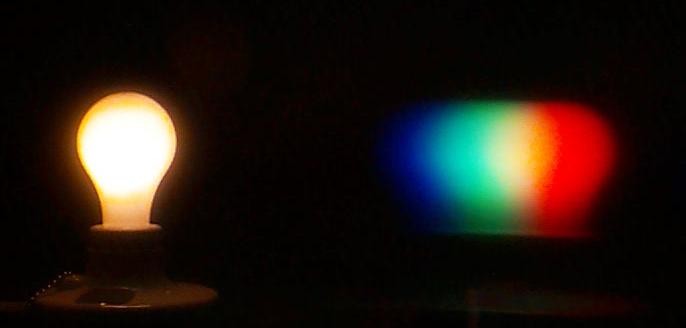
More about vision
Color photographs and color TV images are made by mixing just three colors of light. This works pretty well most of the time, since that is all our eyes can actually see. However, it means that the light coming from a photograph of a light bulb has a different spectrum from the light bulb itself. So you will have to go outside and actually look at the street lights -- a photograph of them won't do! When you looked at colored panels on the computer screen using the spectroscope, you may have noticed that the spectrum of "yellow" was actually the spectrum of "green" plus the spectrum of "red". Real yellow street lights are much more interesting.
The process of recording the "color" of the something is not quite faithful, because the camera and the TV screen will have slightly different interpretations of "red", "green", and "blue". You can see this in the photographs of spectra that we saw on an earlier page: they resemble, but are not identical to, what our eye sees when looking through a diffraction grating at a real light bulb. Compare how our picture of the spectra of a clear incandescent light bulb resembles the true spectra you see when looking through a grating at that type of bulb. You will likely notice that the real thing shows much more yellow than we could capture in our computer photo. Similarly, the photograph through a diffraction grating of a light bulb (shown below) is rather too obviously a superposition of red, green, and blue images. There's no substitute for the real thing!
| Table of Contents Question board email |
| Copyright 2000 J. P. Straley and S. S. Kovash |